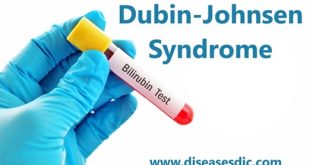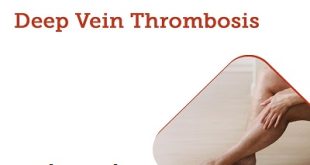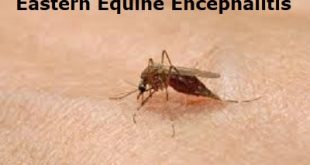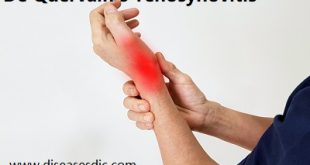Introduction
Dengue is a self-limiting acute mosquito-transmitted disease characterized by fever, headache, muscle, joint pains, rash, nausea, and vomiting. Dengue Fever (DF) is caused by an arbovirus and spread by Aedes mosquitoes. Some infections result in Dengue Haemorrhagic Fever (DHF) and in its severe form, Dengue Shock Syndrome (DSS) can threaten the patientís life primarily through increased vascular permeability and shock.
Incubation Period
It means the time between a bite of an infected mosquito and appearance of symptoms of DF in the bitten person. Commonly, it is 5-6 days. However, it can vary from 3-10 days.
Transmission
It is known that dengue fever is caused by the bite of female Aedes mosquito commonly known as A. aegypti. It is found that these types of mosquitoes live in the area of 35 degrees from the south and 35 degrees north from the latitude which is below in the angle of elevation 1000 meters (3,300 ft). Aedes mosquitoes mainly attack during the morning time and evening time.
Aedes is the mosquitoes that have its many species transmitting disease are A.scutellaris, A.albopictus and last but not least is A.polynesiensis. Humans are known for the host of the virus but it is found that virus also circulates in the primates of the non-human. The infection from Aedes can be transmitted on a single bite.
It is stated that female Aedes also get infected while sucking the blood of a person who is infected with dengue fever. Dengue is the fever which is also transmitted through the blood products which is infected and also through the donation of an organ.
Types of dengue fever
There are several types of DF which affect one’s life and may lead to fatal conditions. They are as follows:
- Classical (Simple) Dengue Fever
- Dengue Haemorrhagic Fever (DHF)
- Dengue Shock Syndrome (DSS)
History
The disease of Dengue was first reported in China during the 265 – 420 CE. But according to the American Society for Microbiology, this disease was first detected in 1779 at Jakarta and Cairo, though the transmission by Aegypti was not confirmed before 1906.
Another fascinating account of the origin of Dengue takes us to Africa, where it was spread worldwide via the slave trade. The name dengue is derived from the Swahili “Ka-Dinga Pepo” which means “cramp-like a disease caused by an evil spirit”.
Prevalence
- Before 1970, only nine countries had experienced severe dengue epidemics. Now, the disease is widespread (endemic) in more than 100 countries worldwide.
- About half of the world’s population is at risk for dengue infection.
- An estimated 500,000 people with severe dengue require hospitalization each year. The mortality rate in this group is about 2.5 percent.
- The island of Hawaii (the “Big Island”) was affected by an outbreak of dengue from September 2015 to March 2016, during which 264 cases were reported.
What causes Dengue Fever?
- The viruses that cause dengue fever are spread by mosquitoes of the species Aedes aegypti, and sometimes also by Aedes albopictus.
Aedes aegypti
Aedes albopictus
- The viruses jumped from monkeys to humans between 100 and 800 years ago, according to the CDC, but dengue remained a minor problem until the middle of the twentieth century.
- Aedes mosquitoes are usually found in urban and suburban areas, as they like to breed in man-made containers like tires, flowerpots, and household water.
- Aedes albopictus mosquitos have been transported to North America and Europe by Asian products like used tires and lucky bamboo.
- These mosquitos can survive subfreezing temperatures, which has allowed it to spread to cooler climates.
Breeding areas of dengue mosquitos
What are Dengue Fever risk factors?
The risk factors for dengue fever are as follows:
- Traveling to or living in endemic or outbreak areas, especially if no mosquito control is attempted by the people or government
- Mosquito bites
- Repeated infection with another serovar of dengue virus with antibodies in the serum active against the first infecting virus type
- Not taking precautions to avoid mosquito bites
Symptoms
Dengue Fever
The symptoms of dengue fever are less in appearance in the case of children who are in young stage and for grown-up children and adults, these symptoms start appearing. They are as follows:
- Fever which is sudden in onset and remains for the last 3-7 days of time period.
- A severe headache especially in the back portion of the eyes.
- Pain in the muscles and joints of a victim especially in ankle and elbow.
- Taste of the mouth getting changed.
- One can prone to vomiting, abdominal pain accompanied by a loss in one’s appetite.
- Skin rashes, itching on the skin, legs etc.
- There is minor bleeding from the part of the body like from nose, gums etc which is accompanied with heavy periods of menstrual.
- Skin from the neck and face start getting flushed.
- The person feels tiredness.
Dengue Hemorrhagic Fever (DHF)
DHF is one of the complicated diseases which can turn fatal. DHF is the fever which occurs only when the person is prone to dengue for more than one time. DHF is very similar to the symptoms of dengue fever. DHF is the fever which is very critical in nature than dengue fever. The symptoms for DHF are as follows:
- After the fever, for 2-5 days the symptoms start appearing, but the symptoms start decreasing when the fever starts resolving.
- The health of the patient decreases after the few days of the fever and there is minor bleeding from nose, gums, skin etc which make the bruises purplish in color.
- In some cases, it is found that after resolving of the fever, there is a failure in the functioning of the circulatory system caused which turns into shock and leads to the death of the patient within 12 to 24 hours.
Dengue Shock Syndrome (DSS)
If the person is aware of the signs and symptoms of dengue than the patient can survive by taking proper medical treatment. DSS is one of the severe situations of dengue which can lead the patient to get hospitalized, in case the following symptoms are found. They are as follows:
- Pain in abdominal part f the body
- Vomiting accompanied by the flow of minor blood
- Body temperature star getting fluctuated
- Blood pressure of the body getting low
- Irritation in nature
If there is an appearance of any of these symptoms, one can get to take the medical treatment as soon as possible because DSS is the fever which can lead to death within the time period of 24 hours
What are the Complications?
Dengue fever may sometimes develop into more dangerous forms such as dengue hemorrhagic fever or dengue shock syndrome, which may lead to the development of life-threatening symptoms. Some of the complications caused by the disease include:
- Severe dehydration
- Continuous bleeding
- Low platelets, due to which clotting of blood doesn’t occur
- Blood pressure may go dangerously low
- Bradycardia (heart beating less than 60 counts per minute)
- Damage to the brain due to bleeding, seizures or encephalitis
- Damage to the immune system
- Enlargement of liver and liver damage
How do you diagnose Dengue Fever?
Diagnosis of dengue is considered when a sudden high fever is accompanied by a severe body muscle or joint pain. It is important to be evaluated when a person develops a fever within two weeks of being in the tropics or sub-tropics. It often causes symptoms that are similar to other diseases such as flu, measles, and typhoid fever etc. Hence investigations are always performed to exclude other disease conditions. Usually, the blood of the patient is tested for the presence of antibodies and virus. Diagnosis can be done by the following methods:
- Isolating the virus by collecting serum sample from patients within 5 days of the appearance of symptoms.
- Detection of specific antibodies can be done by collecting serum within 6 days after onset of symptoms. The serum is tested for specific anti-dengue antibodies by Enzyme-linked Immunosorbent Assay (ELISA). Titres of IgM and IgG antibodies increase four-fold in the serum sample.
- Using Polymerase Chain Reaction (PCR) for detecting viral genomic sequence from Serum or Cerebro Spinal Fluid (CSF) samples collected from the patient, which is more expensive and complicated.
- In the case of more serious complications such as dengue hemorrhagic fever, the following diagnosis must be performed:
- A tourniquet test is to be conducted, where a tourniquet is tied to the arm and if blood blotches tend to appear beyond the tourniquet, the patient may be suffering from increased bleeding, which may indicate dengue hemorrhagic fever
- A decrease in platelet count, also known as thrombocytopenia occurs when platelet count falls below 100,000. Normal platelet counts are between 150,000 to 400,000. A decreased platelet count may be due to dengue fever.
- An increase in hematocrit i.e., the volume percentage of red blood cells (RBCs), by 20% could be another indicator as it occurs due to a rise in the vascular permeability of the plasma. Signs of plasma leakage appear as increased fluid accumulation in the chest and abdominal cavity known as pleural effusion or ascites respectively.
How do you treat Dengue Fever?
- Since there are no known antiviral drugs or injections available for the cure of the disease, treatment or management mainly involves plenty of supportive care that would eventually help save the patient’s life.
- Dengue is characterized by fever and intense body ache. Dengue treatment comprises of reducing the fever with antipyretic drugs such as paracetamol and the body ache with analgesics that help relieve the pain.
- Drugs such as aspirin and ibuprofen should be avoided as they may increase the risk of hemorrhage.
- The patient can also be treated with natural home remedies such as papaya leaves, kiwi and other food items that have been proven to help in the increase of platelet count, which becomes lower during dengue.
- In the case of more severe forms, such as dengue hemorrhagic disease or dengue shock syndrome, the patient must be admitted to a hospital immediately and given proper care.
- Treatments such as intravenous fluid replacement should be administered to these patients to prevent shock. Patients should drink plenty of fluids, as dehydration is common among those affected with Dengue.
Vaccine
- The world’s first dengue vaccine, Dengvaxia or CYD-TDV) developed by Sanofi Pasteur was approved for use in Mexico, Philippines and Brazil in December 2015 for the prevention of the deadly mosquito-borne disease in people living in dengue endemic areas.
- New vaccines TV003/TV005 have been developed by the National Institute of Allergy and Infectious Diseases. They produce antibodies to all 4 dengue virus serotypes. In earlier trials, a single dose of either of the vaccines was able to elicit a robust antibody and cellular immune response.
- Another vaccine developed by Takeda called the Tetravalent Dengue Vaccine (TDV) has also entered its Phase 3 trials early in 2016 in Latin America and Asia.
Foods to take during Dengue Fever
Patient suffering from this fever needs to have sufficient intake of nutrients and healthy diet to overcome the loss caused by the dengue.
Diet should include the following:
- Easily digestible food e.g boiled food, green vegetables, banana, apple, soups, porridge, and herbal tea.
- Lots of fluids, to regain electrolyte and prevent dehydration. E.g fresh juices, coconut water, Oral Rehydration Solution (ORS).
- Consumption of food with Vitamin C acts as a natural cure for dengue fever as it promotes antibodies for faster healing and recovery e.g amla, papaya, and orange juice.
- Food that increases the platelet count and blood count pomegranate juice or black grape juice, green leafy vegetables (boiled), cod liver oil, flaxseed oil, fresh fruits.
- Anyone suffering from dengue should avoid spicy food, foods with saturated fats, processed food, sugary and aerated drinks, absolutely avoid raw vegetable.
How to Prevent Dengue Fever
There is no vaccine to prevent this fever. The best method of protection is to avoid mosquito bites and to reduce the mosquito population. When in a high-risk area, you should:
- Avoid heavily populated residential areas
- Use mosquito repellent indoors and outdoors
- Wear long-sleeved shirts and pants tucked into socks
- Use air conditioning instead of opening windows
- Ensure that window and door screens are secure, and any holes are repaired
- Use mosquito nets if sleeping areas are not screened
Reducing the mosquito population involves getting rid of mosquito breeding areas. These areas include any place that still water can collect, such as:
- Birdbaths
- Pet dishes
- Empty planters
- Flower pots
- Cans
- Any empty vessel
These areas should be checked, emptied, or changed regularly.
 Diseases Treatments Dictionary This is complete solution to read all diseases treatments Which covers Prevention, Causes, Symptoms, Medical Terms, Drugs, Prescription, Natural Remedies with cures and Treatments. Most of the common diseases were listed in names, split with categories.
Diseases Treatments Dictionary This is complete solution to read all diseases treatments Which covers Prevention, Causes, Symptoms, Medical Terms, Drugs, Prescription, Natural Remedies with cures and Treatments. Most of the common diseases were listed in names, split with categories.








if dengue fever, which medicine applying for ?..
There are list of treatment mentioned in the post please find it out. Also certain home remedies are there please follow it.
is there other disease can spread this mosqiuto type?
Yes this type of mosquitoes also cause chickungunya.
is it as the same as plasmodium ??
No it is different from dengue. Plasmodium cause malaria.
thank your effort that making awarness of this disease!!
mosquitoes is very dangerous in our surrounding area,so take careful about.
how can we take care?
very usefull and important all your informative posts but we cant save or print it…that is problem.
which medicine give dengu fever
Please follow the natural medicines like Ayurveda and Siddha.
if there is any medical drug available to cure dengue?
There are 3 vaccines to prevent the dengue which is as follows.
Dengvaxia or CYD-TDV
TV003/TV005
Tetravalent Dengue Vaccine (TDV)
To cure dengue only natural treatment is worthful. Please follows the natural treatment methods that are given in this post.
Nilavembu(Andrographis paniculata) kudineer is the only siddha drug to cure this fever. IMCOPS.product
Thanks so much, I think I am infected with dengue
What are the medicines for incresing the platelet count
1. Nplate (romiplostim)
2. Promacta (eltrombopag)
3. Kiovig
4. Corticosteroids
5. Intravenous immune globulin
6. Danazol
7. Rituximab
8. Lithium carbonate
9. Folic acid
10. Vitamin B12 (cyanocobalamin)
How to treat thrombocytopenia????
We will soon update a post on thrombocytopenia. Please refer to that.
we like to know whether south Africa is not in danger of this desease?if so where maybe found cause this symptoms are alike of HIV
Yes, it is dangerous to south African countries.
what is health education for
this deasese
Regular education programs should be conducted out at different levels to highlight the importance of personal sanitation in preventing dengue.
Health education strategies should educate the people to break the mosquito life cycle by destroying the possible mosquito breeding sites such as concrete pools, water tanks, aquaria, irrigation ditches and drainages as well as air-conditioners and disposable tires.
super nice cottetions
should aware of mosquitoes
Yes, because mosquitoes are the main reason for causing dengue.
which area deungue is affected
Dengue usually spreads in the area where there is no proper drainage and water flow systems.
when dengue come
wich food tack and wich food avaided and how many days teck to good helth
Please read in the post.
2015 , 2016. since children have been vacinnated by Dengue Vaccine, 100+ children already dead in my country Philippines. All has the same causes of death, internal and enlargement of internal organs, bleeding brain. Those children left that has given a vaccination are in danger. Sanofi should answered for that.
Very informative, but too technical. Please if you can include in your compilation, an article about “foot and mouth” disease. Thank you.
if possible, the Scientists and Doctors should come out for some sort of Chemicals or Smoke that can totally annihilate these mosquitoes around the World…
Sir. If dengue fever which medicine applies for this patient
Please have a glance at the post for medicines details.